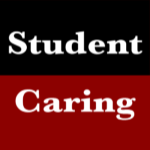By Student Caring Guest Blogger – H. Davis
It should come to no surprise to hear that children are born with certain biological capacities for learning and have a biological understanding of space, motion, and numbers. These raw capacities of human understanding are primarily due to the environment surrounding a newborn. In other words, a child’s surrounding provides information and structure to their upbringing – the same way parents do when they get an infant’s attention.
The brain is typically described as being “like a muscle,” which means in order for it to grow stronger, it needs to be exercised. This analogy can also be used in the day-to-day activities a child experiences. This means that in order for a child to improve their learning ability, they must first learn through trial and error. That’s where movement comes into play since it allows them to connect concepts to action.
So, how does physical exercise make your brain work better?
The Benefits of Exercise on the Brain: Believe it or not, exercising on a daily basis can help increase memory and thinking – both directly and indirectly — among children. In fact, the benefits of exercising can boost mental fitness, banish stress, and allow children’s minds to develop in a timely manner; exercising helps the body reduce insulin resistance, inflammation, and increase the release of growth factors – a naturally occurring substance capable of stimulating growth within the cellular part of the brain according to Wikipedia.
Exercising can also improve a child’s mood and help them sleep better at night, reducing the amount of anxiety and tension experienced in the learning environment– problems caused by cognitive impairment.
Throughout the years, there have been many studies done that have suggested that the parts of the brain that control cognitive thinking have greater volume in children who exercise versus children who don’t. The best part is for children who actively participate in physical education (P.E.) or extracurricular activity, have an increase in the volume of brain regions.
Start the Day With Movements: You can help children develop essential behavior traits by using movement in various learning contexts is a dynamic way to keep students motivated in the classroom and enhance classroom management. With that in mind, incorporating exercise and movement throughout the course of the day makes children less fidgety and more focused on learning. In return, this will help improve student’s behavior and reduce the challenges teachers face with classroom management.
Physical activity is an essential component when it comes to helping children maintain a healthy body and brain. In fact, a recent study found that walking 30 to 40 minutes a day, three times a week, can help a student’s brain structures regrow the cognitive links that might decline into their adulthood. A steady exercise regime benefits a growing child well into their future: regular cardio will lower their risk of heart disease further on down the line.
The effect was similar to stopping the brain’s aging clock anywhere from one to two years. In the long run, physical activity before, during, and after school is a great way to keep their body, heart, and brain focused on the learning task at hand. After all, by teachers incorporating movement into their lesson plan, they’re also supporting student learning in a variety of ways beneficial to the child.
How do you know if your curriculum is actually working? According to Concordia University, teachers should ask their students what they thought about the lesson plan, and reflect on what could have been done differently. Be open to your student’s feedback – especially if they’re providing you with better ways to help improve the relationship between cognitive development and exercising.
In the end, in order to be a great teacher and improve early childhood development through physical activity, you must first become the student – willing to absorb the information given to you by students.
Additional Suggestions to Help Improve the Minds of Young Learners: Some of the best things teachers can do for their students are the simplest. When you keep students busy, you keep their energy levels up and provide their brains with the tools needed for high performance. Teachers, for instance, who insist that students remain seated throughout the duration of their class are not promoting optimal conditions for learning.
Educators and teachers alike should do their best to purposefully integrate movement into their day-to-day curriculum — not just hands-on activity in the classroom, but also daily stretches that challenges them mentally, and physically. So the next time you think of ways to integrate brain-compatible learning into your classroom, think of both the mind and body.
To increase the theater and role-playing aspect into the classroom, for example, teachers can get their class used to daily and/or weekly role-playing games. Students can act out a key moment within a play of their choice, or switch roles with their teacher and educate the class about a certain policy, rule, or topic.
–––––––––––––––––––
H. Davis is a writer who is passionate about K-12 education and loves exploring various ways to make learning a fun experience for everyone. If you can’t catch him online, you might be able to spot him out and about reading up on world news. Follow him on Twitter at @Davis241. Thanks!

0 Comments